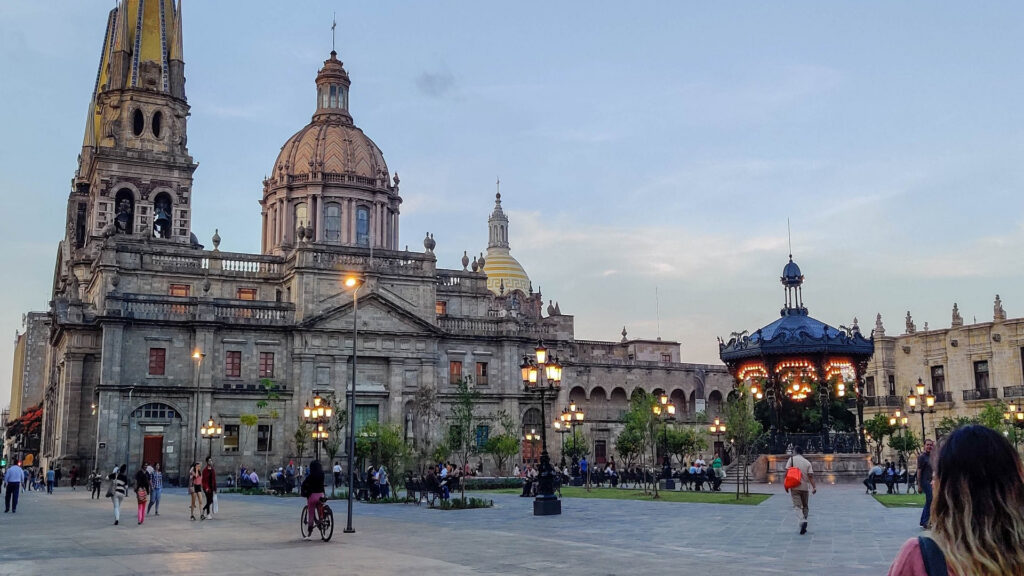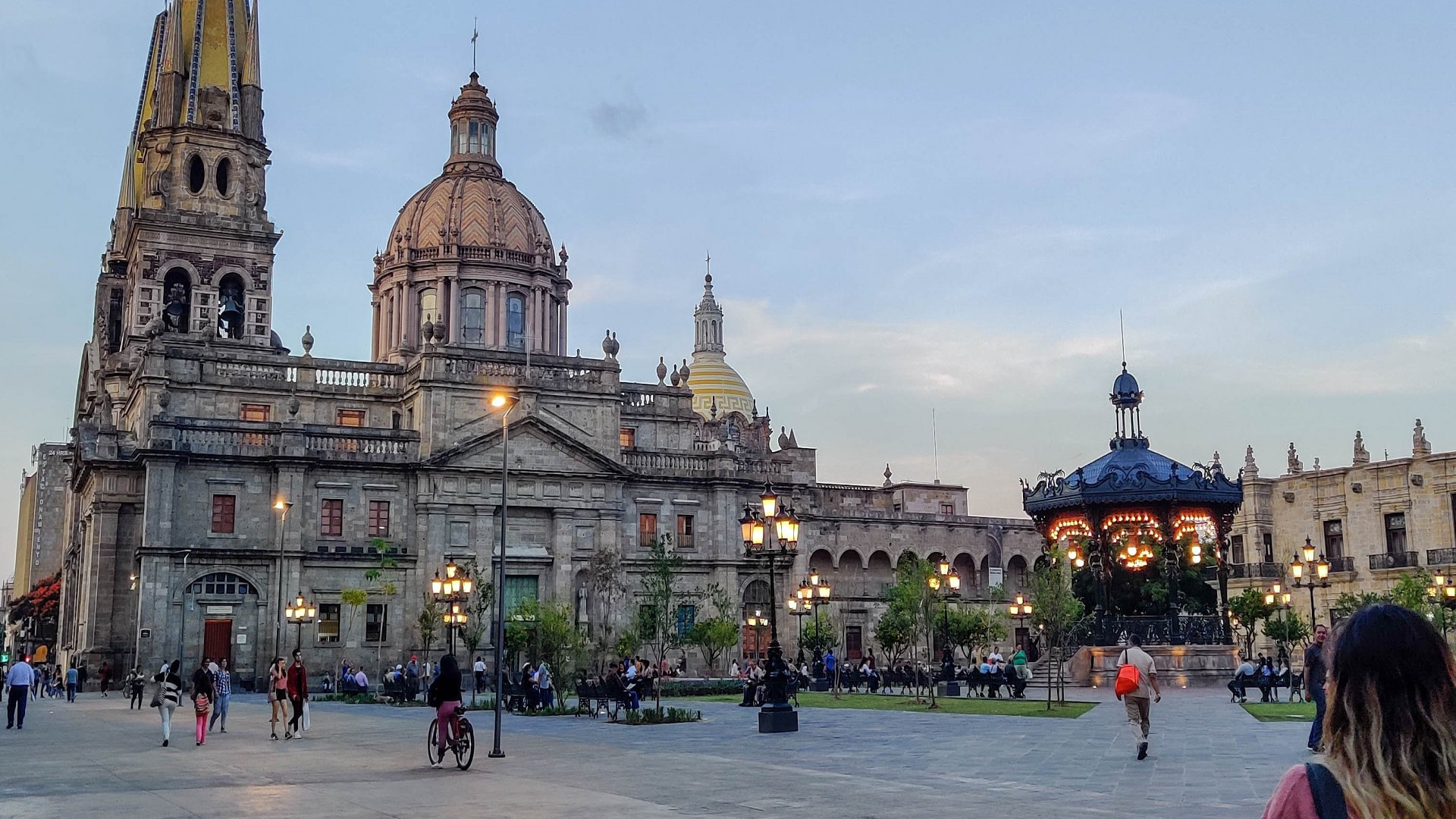So, have you ever wondered what it would be like to travel back in time? Like, to step into a world filled with historic charm and captivating stories? Well, if you’re up for an adventure, then exploring Mexico’s colonial treasures should definitely be on your travel bucket list. Trust me, you won’t be disappointed!
Mexico is known for its vibrant culture and breathtaking landscapes, but what really sets it apart are its colonial towns. These hidden gems are like living museums, showcasing the rich history and architectural beauty of the Spanish colonial era. From cobblestone streets to beautifully preserved buildings, these towns offer a unique and immersive experience that transports you back in time.
Picture yourself strolling through the colorful streets of San Miguel de Allende, with its ornate churches and charming boutiques. Or imagine exploring the ancient ruins of Chichen Itza, a UNESCO World Heritage site that was once a thriving Mayan city. And let’s not forget about Guanajuato, with its winding underground tunnels and stunning Baroque architecture. These are just a few examples of the many colonial treasures waiting to be discovered in Mexico.
In our article, we’ll dive deeper into the history and beauty of these colonial towns, and share some insider tips on how to make the most of your visit. So, get ready to embark on a journey back in time and uncover the hidden treasures that Mexico has to offer!

The Historic Charm of Mexico’s Colonial Towns
Mexico is a country rich in history and culture, and nowhere is this more evident than in its colonial towns. These charming towns offer a glimpse into Mexico’s past, with their beautiful architecture, rich history, vibrant culture, and delicious cuisine. Exploring Mexico’s colonial treasures is like taking a journey back in time, where every corner tells a story and every street exudes historic charm.
Discovering the architectural beauty of Mexico’s colonial towns
One of the most captivating aspects of Mexico’s colonial towns is the stunning architecture. As you wander through the streets, you’ll be greeted by colorful buildings adorned with intricate details. The colonial-era influence is evident in every corner, with the use of arches, balconies, and ornate facades. The Spanish colonial style is particularly prominent, with its fusion of European and indigenous motifs. From the grand cathedrals to the humblest homes, the architecture of Mexico’s colonial towns is truly a sight to behold.
Exploring the rich history behind each colonial town
Every colonial town in Mexico has its own unique story to tell. From the early Spanish conquest to the struggles for independence, these towns have witnessed centuries of history. One of the most renowned colonial towns is San Miguel de Allende, which played a vital role in Mexico’s fight for independence. Walking through the town’s cobblestone streets, you can’t help but feel a sense of the past. The history is palpable as you visit landmarks like the Parroquia de San Miguel Arcángel, a symbol of the town’s architectural and historical significance.
Experiencing the vibrant culture and traditions of colonial Mexico
Mexican culture is a vibrant tapestry woven with indigenous, European, and African influences. In the colonial towns, you have the opportunity to experience this rich cultural heritage firsthand. Whether it’s witnessing traditional dances, listening to mariachi music, or participating in local festivals, colonial Mexico offers a truly immersive cultural experience. One such festival is Dia de los Muertos (Day of the Dead), which takes place in many colonial towns. This colorful and lively celebration honors the deceased, with families creating elaborate altars and parades filling the streets with music and dancing.
Sampling the delicious cuisine in the charming town squares
Mexico is famous for its flavorsome cuisine, and the colonial towns are no exception. As you explore the bustling town squares, you’ll be enticed by the aroma of traditional dishes wafting from the local food stalls. From tacos to tamales, enchiladas to mole, the culinary delights of colonial Mexico are sure to satisfy your taste buds. Don’t forget to indulge in some traditional Mexican sweets, such as churros and pan dulce. And of course, no visit to a colonial town is complete without sipping on a refreshing margarita or trying some authentic tequila.
Visiting the iconic cathedrals and churches of colonial Mexico
No discussion of Mexico’s colonial towns is complete without mentioning the iconic cathedrals and churches that dominate the skyline. These architectural marvels are a testament to the faith and devotion of the Mexican people. From the awe-inspiring Cathedral of Mexico City to the charming Church of Santo Domingo in Oaxaca, these sacred places are not only places of worship but also cultural landmarks. The intricate details, ornate altars, and religious art inside are a testament to the craftsmanship of the indigenous and European artisans who built them.
Strolling through the cobblestone streets lined with colorful buildings
One of the joys of exploring Mexico’s colonial towns is simply wandering through their cobblestone streets. These narrow, winding paths are lined with vibrant buildings painted in shades of blue, yellow, pink, and green. The colonial-era architecture with its arches, balconies, and courtyards creates a picturesque backdrop for your leisurely stroll. As you walk, you’ll pass by quaint shops, charming cafes, and lively plazas where locals gather to socialize. The atmosphere is lively yet relaxed, and every step reveals a new hidden gem to discover.
Learning about the indigenous influences in colonial Mexican architecture
Mexico has a rich indigenous history that significantly influenced the colonial architecture of the towns. Many of the buildings seamlessly blend Spanish and indigenous elements, creating a unique style that is distinctly Mexican. For example, in the city of Puebla, you’ll find the breathtaking Church of Santo Domingo, which showcases a fusion of Baroque and indigenous themes. The intricate Talavera tiles, traditional chandeliers, and colorful murals are a testament to the indigenous craftsmanship that played a role in the construction of these architectural masterpieces.
Enjoying the lively festivals and celebrations in colonial towns
Life in the colonial towns revolves around vibrant festivals and celebrations that honor both religious and cultural traditions. From Semana Santa (Holy Week) processions to the Guelaguetza festival in Oaxaca, there is always something to celebrate. These events are a chance to witness the fusion of indigenous and European customs, with traditional costumes, music, and dance on full display. Whether it’s joining the locals in a traditional dance or simply spectating from the sidelines, participating in these festivities provides a unique glimpse into the heart and soul of colonial Mexico.
Shopping for local handicrafts and souvenirs in bustling markets
If you’re looking to take a piece of colonial Mexico home with you, the bustling markets are the place to go. Here, you’ll find an array of colorful handicrafts, textiles, ceramics, and artwork created by local artisans. Whether you’re searching for a handwoven rug, a beautifully embroidered blouse, or a piece of traditional pottery, the markets in the colonial towns offer a treasure trove of unique finds. Exploring these markets is not only a shopping experience but also an opportunity to support the local artisans and learn more about their craft.
Uncovering the hidden gems and secret spots of colonial Mexico
While the iconic landmarks in the colonial towns draw crowds of visitors, there are also hidden gems and secret spots waiting to be discovered. These may include hidden courtyards, tucked-away cafes, or overlooked museums. One such example is the Secretaría de la Educación Pública in Mexico City, a stunning Art Deco building that hosts a collection of murals by renowned Mexican artists. Exploring these hidden gems allows you to experience a more intimate side of Mexico’s colonial history and uncover the lesser-known stories that add depth to these towns.
Immersing in the local art scene of colonial towns
Art has always played a significant role in Mexican culture, and the colonial towns are no exception. From traditional folk art to contemporary masterpieces, the art scene in these towns is thriving. You’ll find galleries showcasing the works of local and international artists, as well as street art that adds a colorful touch to the colonial architecture. For art enthusiasts, visiting the Casa Azul in Coyoacán, the former home of Frida Kahlo, is a must. This museum provides insight into the life and art of one of Mexico’s most influential painters.
Taking part in guided tours and walking trails to fully explore the colonial treasures
To make the most of your visit to Mexico’s colonial towns, consider joining a guided tour or following a walking trail. These tours offer a deeper understanding of the history, culture, and architecture of each town. Local guides share fascinating stories and anecdotes as you navigate the streets and visit key landmarks. Whether it’s a guided tour of the historic center of Guanajuato or a self-guided walking trail through the colonial district of Querétaro, these experiences provide an immersive journey into Mexico’s colonial treasures.
Snapping photos of the picturesque landscapes and breathtaking views
Every corner of Mexico’s colonial towns presents a perfect photo opportunity. From the colorful buildings to the stunning landscapes, you’ll find yourself constantly reaching for your camera. Whether it’s capturing the view from a hilltop overlooking the town or snapping a photo of a vibrant street scene, the colonial towns are a photographer’s paradise. Be sure to take your time and soak in the beauty of your surroundings as you document your journey through these historical gems.
Reflecting on the historical significance of Mexico’s colonial past
As you explore Mexico’s colonial towns, take a moment to reflect on the historical significance of these places. Each town has played a role in shaping Mexico’s past, from the struggles for independence to the preservation of indigenous traditions. It’s a chance to not only appreciate the beauty and charm of the colonial architecture but also to gain a deeper understanding of Mexico’s complex history. The colonial towns serve as a reminder of the resilience and cultural richness of the Mexican people, and exploring them is truly a journey back in time.
In conclusion, exploring Mexico’s colonial towns is an immersive experience that allows you to step back in time and discover the country’s rich history, architectural beauty, vibrant culture, and delicious cuisine. From the stunning architecture to the hidden gems, from the lively festivals to the bustling markets, there is something for everyone in these colonial treasures. So pack your bags, grab your camera, and set off on a journey through Mexico’s colonial past.
